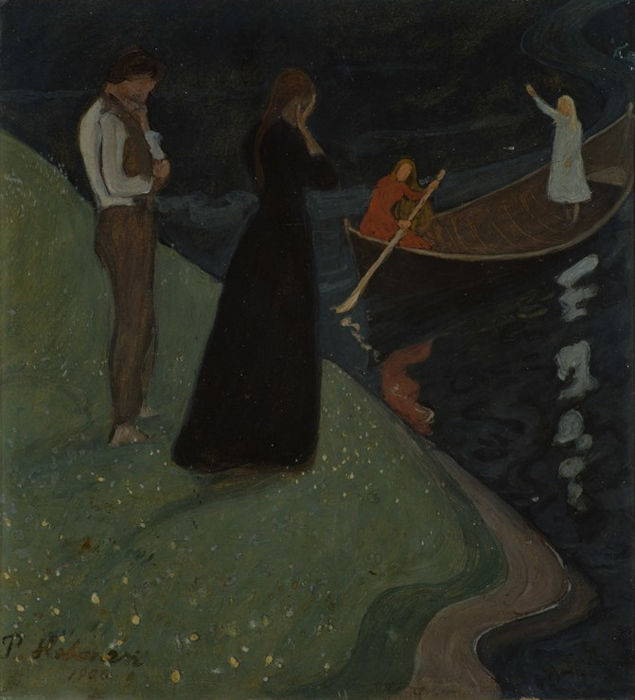Tuonela – The Land Of The Dead In Beliefs Of Ancient Finnish People
A. Sutherland - AncientPages.com - In the Finnish version of Hades, Tuonela was the land of death.
It was an underground home or city for all the dead, not only the good or the bad ones. In lifeless and dark Tuonela that appears several times in the Kalevala and Finnish folk poems, everybody slept forever. However, a brave shaman still was able to travel to this land of darkness. Using his power of trance, he often did it to ask the forefathers for guidance he needed among the living on earth.
At the River of Tuonela by Pekka Halonen (1865–1933). Credit: Public Domain
Sometimes, a shaman could quickly contact Tuonela because he had a serious reason, but he managed to trick the guards into entering the Land of the Dead.
Shaman's Encounter With Tuonela
In Tuonela's rules, the great underworld god Tuoni and his wife Tuonetar, the realm's hostess but not any lovely lady.
Their frightful children are three daughters (Lowyatar) and a son (Tuoen Poika) known as the god of the Red Cheeks, who is responsible for chopping Lemminkainen's
Kalevala, a 19th-century work of epic poetry compiled by Elias Lönnrot from Finnish and Karelian folklore and mythology, tells that Vainamoinen (Väinämöinen) arrives in the Land of the Dead, and Tuonetar is happy to offer him a golden goblet of beer, but when he looks closer, he can see it is a black poison made of frog spawn, young poisonous snakes, lizards, adders, and worms. It is the beer of oblivion.
If people drink it, they forget they ever existed and cannot return to the land of the living. Vainamoinen (), who makes this ill-fated trip, can finally escape to the land of the living by turning into a snake.
Only Tuonetar and Tuoni's children are allowed to leave Tuonela without any trouble. Tuonetar is a horrible figure with three fingers on each hand and a hat drawn to her shoulders. She was called "the good hostess" for providing her guests with all manner of disgusting fare to eat, including worms, toads, lizards, and snakes.
Tuonetar and Tuoni have a trio of well-known daughters and a son.
One of the daughters warns Väinämöinen against crossing the river of death, but eventually gives in to his arguing and ferries him over to her father's side of the river. Tuoni tries to trap Väinämöinen but fails.
The second daughter, Lowyatar, is blind. After impregnation from the east-wind gave birth to the spirits of the nine most dreaded diseases (colic, pleurisy, fever, ulcer, plague, consumption, gout, cancer, and sterility. The third daughter is the mother and jailer of diseases, devils, and evil spirits imprisoned in a dungeon beneath a rock of the Tuoni River. She grinds the stone like a millstone on these diseases until they escape and torture humans. Interestingly enough, while the three daughters don't have names, the rock above the dungeon does have Kipu-Kivi or Kipuvuori.
Yet another child is their son Tuoen Poika, believed to be responsible for chopping Lemikainen's (Lemminkäinen) body into pieces and throwing it into the river of death.
In the beliefs of the ancient Finns, this family rules the gloomy world of the dead, wandering in Hell as shadowy ghosts.
The fate of the good and the bad is the same, tradition says. Tradition also has it that occasionally, living people could go to Hell for information or spells. However, the journey was difficult and tiring. It required weeks of arduous wandering in a desert and, finally, the crossing of the river with the help of a ferryman (similar to Charon in Greek mythology).
As we know, the deceased entered Hades with the help of Charon, the ferryman and a psychopomp of Hades whose duty was to carry dead souls across the rivers Acheron and Styx that divided the world of the living from the world of the dead.
We mentioned earlier that a shaman usually had a more straightforward possibility because he could use some tricks to contact the kingdom of the dead. It required weeks of hiking across the wilderness and eventually crossing the river with the help of a raft.
The vast underground of Tuonela is guarded by a river patrolled by Surma, a terrible beast similar to Cerberus from Greek mythology, which symbolizes sudden, brutal death. Surma appears in the epic poem Kalevala. According to the creature's description, it is a pair of massive jaws, with rows of huge fangs, attached to a greedy, infinite throat. Surma makes sure that no one escapes from Tuonela, the world of the dead.
This concept of Hell is in many aspects very similar to many other beliefs preserved by different ancient cultures.
Today, in Finnish Christianity, it is often interpreted as the place of the dead before the Last Judgement.
Updated on January 28, 2024
Written by – A. Sutherland - AncientPages.com Senior Staff Writer
Copyright © AncientPages.com All rights reserved. This material may not be published, broadcast, rewritten or redistributed in whole or part without the express written permission of AncientPages.com
Expand for referencesReferences:
Hades – Land Of The Dead In Greek Beliefs Offered Punishment And Paradise Full Of Harmony
Tartarus: The Land Of The Dead - Mysterious Underground World
Vainamoinen – Sage, Sorcerer, Adventurer And Friend Of Ilmarinen In Kalevala Myths And Legends
Lemminkainen: Mythical War-Hero Of Finnish Great Epic ‘Kalevala’
More From Ancient Pages
-
 Unexpected Danger Lurks Beneath Ancient Maya Cities – Mercury Pollution Discovered
Archaeology | Sep 23, 2022
Unexpected Danger Lurks Beneath Ancient Maya Cities – Mercury Pollution Discovered
Archaeology | Sep 23, 2022 -
 New Type Of Early Previously Unknown Human Discovered In Israel
Archaeology | Jun 29, 2021
New Type Of Early Previously Unknown Human Discovered In Israel
Archaeology | Jun 29, 2021 -
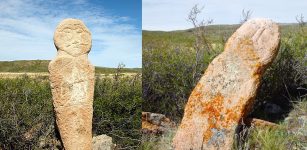 Balbals – Ancient Stone Guards Of The Kazakh Steppe
Artifacts | Dec 21, 2015
Balbals – Ancient Stone Guards Of The Kazakh Steppe
Artifacts | Dec 21, 2015 -
 Mysterious Ancient Human Skeletons Found In Florida Lake Puzzle Archaeologists – Unknown Lost Settlement?
Featured Stories | May 21, 2024
Mysterious Ancient Human Skeletons Found In Florida Lake Puzzle Archaeologists – Unknown Lost Settlement?
Featured Stories | May 21, 2024 -
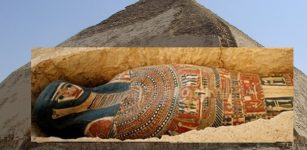 Egypt Opens Two Ancient Pyramids And Unveils Newly Found Sarcophagi And Mummies
Archaeology | Jul 15, 2019
Egypt Opens Two Ancient Pyramids And Unveils Newly Found Sarcophagi And Mummies
Archaeology | Jul 15, 2019 -
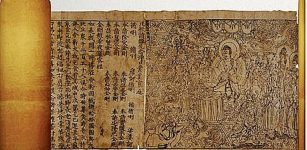 On This Day In History: ‘Diamond Sutra’ The Oldest Dated, Printed Book Is Published – On May 11, 868
News | May 11, 2016
On This Day In History: ‘Diamond Sutra’ The Oldest Dated, Printed Book Is Published – On May 11, 868
News | May 11, 2016 -
 Saint Botvid – Viking Who Was Killed By A Slave He Granted Freedom
Featured Stories | Apr 10, 2023
Saint Botvid – Viking Who Was Killed By A Slave He Granted Freedom
Featured Stories | Apr 10, 2023 -
 Surprising And Fascinating Finds On The Wreck Of The Lootsi Cog
Archaeology | Nov 27, 2023
Surprising And Fascinating Finds On The Wreck Of The Lootsi Cog
Archaeology | Nov 27, 2023 -
 Obsidian Blades Reveals Dynamic Neolithic Social Networks – New Analysis
Archaeology | Oct 18, 2022
Obsidian Blades Reveals Dynamic Neolithic Social Networks – New Analysis
Archaeology | Oct 18, 2022 -
 Rare 3,000-Year-Old Gold Bead Found On Temple Mount By Young Boy
Archaeology | Nov 30, 2020
Rare 3,000-Year-Old Gold Bead Found On Temple Mount By Young Boy
Archaeology | Nov 30, 2020 -
 Utsuro Bune: Ancient Extraterrestrial Encounter With A ‘Hollow Ship’ And An Alien Visitor
Featured Stories | Jun 11, 2020
Utsuro Bune: Ancient Extraterrestrial Encounter With A ‘Hollow Ship’ And An Alien Visitor
Featured Stories | Jun 11, 2020 -
 Heimdallr (Heimdall): Norse God That ‘Illuminates The World’ And Guards The Rainbow Bridge Bifrost In Asgard
Norse Mythology | Feb 6, 2016
Heimdallr (Heimdall): Norse God That ‘Illuminates The World’ And Guards The Rainbow Bridge Bifrost In Asgard
Norse Mythology | Feb 6, 2016 -
 Dragons And Dragon Kings In Ancient Mythology
Featured Stories | Mar 8, 2023
Dragons And Dragon Kings In Ancient Mythology
Featured Stories | Mar 8, 2023 -
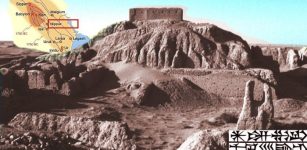 Nippur – Holy City Of God Enlil And One Of The Oldest Cities Of Sumer
Featured Stories | Jul 24, 2023
Nippur – Holy City Of God Enlil And One Of The Oldest Cities Of Sumer
Featured Stories | Jul 24, 2023 -
 Scientists Argue Over The Mysterious Void Discovered Inside The Great Pyramid Of Giza
Archaeology | Nov 8, 2017
Scientists Argue Over The Mysterious Void Discovered Inside The Great Pyramid Of Giza
Archaeology | Nov 8, 2017 -
 Groundbreaking Discovery Reveals High Cognitive Abilities In Humans Who Lived 170,000 Years Ago
Archaeology | Feb 7, 2022
Groundbreaking Discovery Reveals High Cognitive Abilities In Humans Who Lived 170,000 Years Ago
Archaeology | Feb 7, 2022 -
 3,300-Year-Old Bronze Figurine Of Canaanite God Unearthed At Lost Biblical City
Archaeology | Apr 12, 2020
3,300-Year-Old Bronze Figurine Of Canaanite God Unearthed At Lost Biblical City
Archaeology | Apr 12, 2020 -
 Nurikabe: Trickster That Manifests Itself As Invisible, Impassable Wall In Japanese Old Beliefs
Featured Stories | Oct 21, 2019
Nurikabe: Trickster That Manifests Itself As Invisible, Impassable Wall In Japanese Old Beliefs
Featured Stories | Oct 21, 2019 -
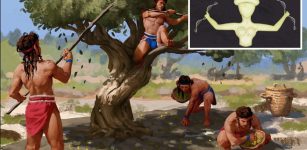 Ancient DNA Reveals “Completely Unexpected” Marriage Rules In Minoan Crete
Archaeology | Jan 16, 2023
Ancient DNA Reveals “Completely Unexpected” Marriage Rules In Minoan Crete
Archaeology | Jan 16, 2023 -
 Viking Age Shields From The Gokstad Ship Burial – Re-Examined
Archaeology | Apr 6, 2023
Viking Age Shields From The Gokstad Ship Burial – Re-Examined
Archaeology | Apr 6, 2023

